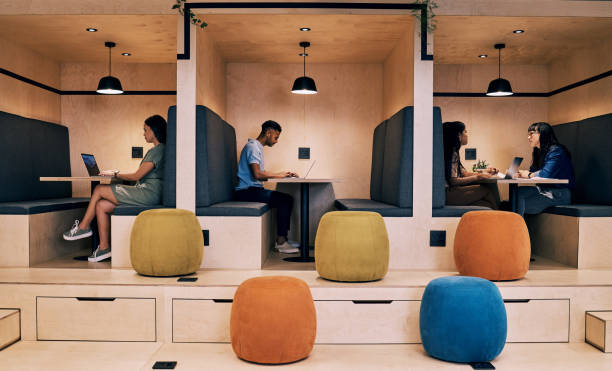The design and layout of a cubicle office space play a significant role in shaping the work environment, productivity, and overall employee satisfaction. With more businesses embracing open floor plans and shared workspaces, cubicle offices are often viewed as outdated. However, they can still offer a highly efficient and cost-effective solution for organizations when designed thoughtfully. In this article, we will explore strategies to maximize efficiency in a cubicle office layout and design.
Optimal Cubicle Arrangement: The first step to maximize efficiency in a cubicle office is to ensure the optimal arrangement of cubicles. Cluster departments or teams together, making it easier for employees to collaborate when necessary. Additionally, consider factors such as natural light, proximity to amenities, and traffic flow when deciding on cubicle placements.
Ergonomic Workstations: Employees spend a significant portion of their day at their desks. Providing ergonomic workstations with adjustable chairs, sit-stand desks, and proper lighting can greatly improve comfort and productivity. Ergonomic furniture reduces the risk of work-related injuries and enhances employee well-being.
Minimize Clutter: Clutter can be a significant distraction in cubicle offices. Encourage employees to keep their workspaces organized and provide storage solutions such as drawers, shelves, and filing cabinets. Reducing clutter not only enhances efficiency but also makes the office space more visually appealing.
Acoustic Solutions: Cubicles are often criticized for noise levels. To address this issue, consider implementing acoustic panels, noise-cancelling headphones, and sound-absorbing materials. Providing a quieter environment can lead to better concentration and productivity.
Collaboration Zones: While cubicles offer individual workspaces, it’s important to have designated collaboration zones. These areas can be equipped with whiteboards, comfortable seating, and technology for impromptu meetings or brainstorming sessions. By creating spaces for collaboration within the cubicle office, you can foster teamwork and creative thinking.
Flexible Furniture: Flexibility is key in modern office design. Invest in modular and easily reconfigurable furniture to accommodate changing needs. This allows the office space to adapt to new projects, team sizes, and workflow requirements without significant disruption.
Natural Light: Natural light has a profound impact on employee well-being and productivity. Whenever possible, position cubicles close to windows to maximize access to natural light. If that’s not feasible, use full-spectrum lighting that mimics natural daylight.
Biophilic Design: Incorporating elements of nature, such as indoor plants, green walls, or nature-inspired decor, can improve air quality and reduce stress. Biophilic design elements also contribute to a more pleasant and productive workspace.
Technology Integration: Ensure that the cubicle office layout accommodates technology needs. Provide accessible power outlets, cable management solutions, and consider installing wireless charging stations to keep employees connected and productive.
Breakout Areas: Employees need a break from their cubicles to recharge. Design breakout areas with comfortable seating, games, and refreshments. These spaces can serve as relaxation zones, helping to reduce stress and improve overall employee well-being.
Customization: Allow employees to personalize their cubicles within reasonable limits. Allowing them to add personal touches can create a sense of ownership and comfort in their workspace, leading to increased satisfaction and productivity.
Remote Work Integration: Recognizing the growing trend of remote work, consider integrating technology and policies that enable remote work in your executive table design. This can improve flexibility and reduce the need for a fixed desk for every employee.
Green Initiatives: Implement environmentally-friendly initiatives within the office space, such as recycling programs and energy-efficient appliances. Not only does this demonstrate corporate responsibility, but it can also lead to cost savings and a healthier workplace.
Wellness Programs: Introduce wellness programs to encourage healthy habits among employees. These may include fitness challenges, mindfulness programs, and access to healthy snacks. A healthy workforce is a more productive one.
Regular Feedback: Lastly, continually seek feedback from employees about the cubicle office layout and design. They are the ones who spend the most time in the space and can provide valuable insights into what works and what needs improvement.
In conclusion, cubicle office layouts can be optimized to create efficient and productive work environments. By carefully considering factors like cubicle arrangement, ergonomic design, acoustic solutions, and technology integration, you can create a workspace that enhances employee satisfaction and overall business performance. Adapting to the evolving needs of your workforce and regularly seeking feedback will ensure your cubicle office remains a relevant and effective solution in the modern workplace.





